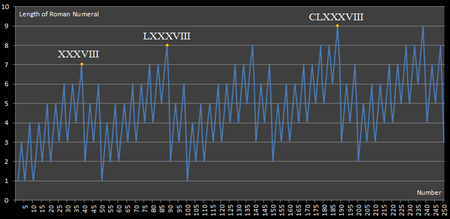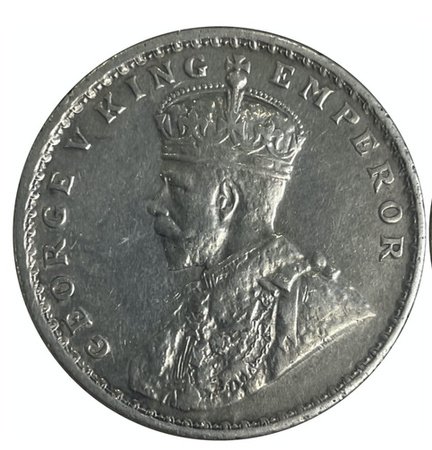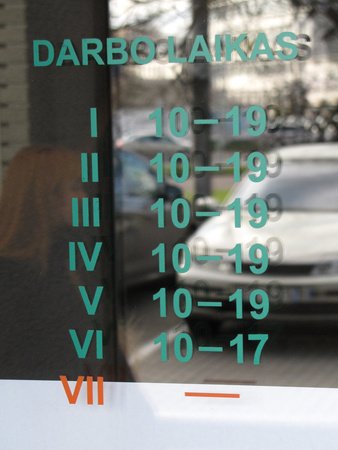
Roman Numerals Explained
Last updated: Monday June 26th, 2023
Report this blog
Introduction
The Roman numeral system originated in ancient Rome and spread all over Europe with the expansion of the Roman Empire. But it remained confined only to Europe. Elsewhere in the world, other systems were being used.
One such system was the Hindu numeral system, developed in India. It was introduced to Europe by the Arabs, thereby giving it the misnomer "Arabic numerals".
By the fifteenth century, the usage of Roman numerals had almost discontinued and was largely replaced by the Hindu-Arabic numerals and with the Age of Discovery, it spread to the Americas, Africa and Oceania.
But for this blog, we will be focusing on the Roman system, its fundamentals and working, the problems found in this system and also some lesser-known features.
So let's begin!
How does the system work?
The modern Roman numeral system consists of seven letters. They are:
How those letters came to represent these numbers is a story for another time.
Let's try to understand how the system works.
The seven numbers mentioned above are the backbone of this system and can be considered as the "primary" numbers. So what if you want to write a "non-primary" number, like 286?
The system follows what in mathematics is called a subtractive notation. It basically means that you add the larger number and then subtract the smaller number from the beginning.
Let's take an easy example: the number four.
So you get the basic idea of how this system works. Now let's take a look over some other numbers.
Let's convert 286 to the Roman system. We'll do this step-by-step.
200 = 100 + 100 = 2 × 100 = CC
80 = 50 + 10 + 10 + 10 = 50 + (3 × 10) = LXXX
The non-standard (and also a nonsensical) method is to subtract 50 from 100 and then add three tens to it.
80 = 50 + 10 + 10 + 10 = (100 – 50) + (3 × 10) = LCXXX
Now, this is not an incorrect notation, per se, but it is just not standard. It is almost certainly legal!
6 = 5 + 1 = VI
200 + 80 + 6 = CC + LXXX + VI = CCLXXXVI
Some other examples for different numbers:
= 1000 + 500 + 200 + 50 + 20 + 6
= 1000 + 500 + (2 × 100) + 50 + (2 × 10) + 5 + 1
= M + D + CC + L + XX + V + I
= MDCCLXXVI
= 2000 + 20 + 3
= (2 × 1000) + (2 × 10) + (1 × 3)
= MM + XX + III
= MMXXIII
= 3000 + 400 + 20 + 8
= (3 × 1000) + (500 – 100) + (2 × 10) + 5 + (1 × 3)
= MMM + CD + XX + V + III
= MMMCDXXVIII
Problems of the Roman Numeral System
Let's now take a look at some of the problems posed by this system. One of the most peculiar aspects of the system is the several ways one can write a number in.
Take 999 as an example. It can be written in four different ways, all of which are legal, but only one of which is standard:
LMVLIV = (1000 – 50) + (50 – 5) + (5 – 1)
VMIV = (1000 – 5) + (5 – 1)
IM = 1000 – 1
The first notation is the standard while the others are legal but not standard.
See how there are four different notations for a single number? Also observe their lengths. The first two (including the standard) are 6 letters long while the other two are only 4 and 2 letters long.
This brings us to our next problem. Consider the numbers 1000 and 4899.
4899 = MMMMDCCCXCIX
While in the Hindu-Arabic numerals, both the numbers are exactly four characters long, but in the Roman system, 4899 takes up 12 times as many characters as it takes for 1000.
Let's move on to the next peculiarity: the absence of zero. The Roman system is well-known for not having the zero.
Zero acts as a placeholder. It doesn't have any value on its own but it changes the value of other digits. Take 160 as example. How would you say it in English? One hundred and sixty or one sixty or some other regional thing that I might not be aware of.
And for our last peculiarity, there are some examples of years after 1000 CE being written as a combination of two numbers between 1 to 99.
Oh and also I found this beautiful chart online showing the character lengths of all Roman numerals until the number 250.
Observe the stairway kind of pattern formed and how the local maxima in all the five cases are formed by numbers ending in 8, that is because of the one-digited numbers, 8 takes up the largest number of characters.

Fractions
You might say, um... what? Believe me, that was my reaction as well.
The Romans had a notation for 1/2 as well.
Here's a list of all fractions:
2/12 = 1/6 = :
3/12 = 1/4 = ∴
4/12 = 1/3 = ∷
5/12 = ⁙
6/12 = 1/2 = S
7/12 = S·
8/12 = 2/3 = S:
9/12 = 3/4 = S∴
10/12 = 5/6 = S∷
11/12 = S⁙
12/12 = 1 = I
There are some other fractions as well, all of which are multiples of 12. I will not be showing them here because they would probably make this blog overcomplicated and your brain hurtful. If you still want to know about them, you can find them here.
Apostrophus
Back in those days, numbers larger than 5000 were rarely used. But we need notations for them as well!
One such way to write large numbers was the apostrophus.
CCIↃↃ = ↂ = 10,000
CCCIↃↃↃ = ↈ = 100,000
IↃ = D = 500
IↃↃ = ↁ = 5000
IↃↃↃ = ↇ = 50,000
As you can see above, some of the numbers had additional symbols as well.
Vinculum
The final feature that we will be talking about is vinculum, in which any letter was multiplied by 1000 by adding an overline.
Let me explain with an example:
999,000 = CMXCIX = 999 × 1000
123,000 = CXXIII = 123 × 1000
4000 = IV = 4 × 1000
50,000 = L = 50 × 1000
6900 = |DCXC| = 690 × 10
47,000 = |MMMMDCC| = 4700 × 10
CC = 200 × 100,000 = 20,000,000
Modern use
Even though Hindu-Arabic numerals are superior in every nature to the Roman numerals, it is still used in a wide range of fields and applications.
One of the most popular usage of Roman numerals is as ordinals, which denote rank or position.
Think of monarchs such as Charles III and Louis XIV or rockets such as Saturn V.


The next time you read a book, before skipping the preface and introduction pages, take a look at the format the page numbers are printed in.
Sporting events are also usually denoted with a Roman numeral ordinal.
In astronomy, a planet's natural satellites are given the official designation in the format of [Planet's name] followed by [Roman numeral]. So Phobos is "Mars I" and Deimos is "Mars II".
In inorganic chemistry, an element's oxidation number is always mentioned in Roman numerals.
In legal fields, laws, codes and amendments are all organised by Roman numerals.
And finally, perhaps, the most significant usage of Roman numerals in modern times is by the Romance languages, like French XVIIIe siècle and the Spanish siglo XVIII, both of which mean the "18th century". This feature is also found in some Slavic languages.


So that was it! A short informational, educational and mathematical blog about the Roman numeral system.
In some recent developments, I have found myself falling more and more in love with mathematics, statistics and data visualisation, and other fields of applied mathematics.
It has been more than 7 months since I released my last blog. With this blog, I hope to return to blogging, but I'm afraid I still won't be as active as I used to be back in pandemic era.
Hopefully, this blog could be expanded to a series about the sheer beauty of mathematics.
And on that note, I conclude this blog. Goodbye! 👋

Yeah educational tag has been so rarely used.
And who would've known there's so many other little features about Roman Numerals that we never hear about!
Indeed, so many features that didn't make the cut and have fallen into disuse. :(
Honestly, that's not a problem at all if we have to wait several months between two consecutive blogs if they are of this quality.
That chart is definitely the cherry on the cake for this blog.
Apparently some sources say that I could only precede V and X.
Along with subtractive notation, Roman numerals also used additive notation so all of the digits were required and hence CMXCIX was considered standard, probably...
You explained that infinitely better than my History tutor in high school, although that was almost "L" years ago (see what I did there).
TIL that there were fractions in Roman numerals!
I'm grateful for those compliments. 😊
Yeah completely new concept for me too. Stumbled upon while browsing mathematical topics on Wikipedia.
P. S. I don't know about you, but we're allowed to use calculators in the Scuola Superiore, because when we're 13/14 and older it's supposed that we should have learned how to calculate without so... they let us use them.
No, no, no! Calculator is a big no in Indian schools. While there are some private schools that allow calculator in exams, the vast majority don't. One is expected to remember the squares of all numbers till 30, cubes, square roots and cube roots of all the numbers until 10, and logarithms until 10 as well.
why does this sound like an aficionado commentIndian numerals are Hindu-Arabic numerals so almost everyone knows that but I might try to make a blog for that one too along with some other mathematical concepts. 😉
I'd consider the best notation the shortest one, even if it isn't standard. However, I guess it can get a bit confusing.
when shall we start on project math bhāṣa anti